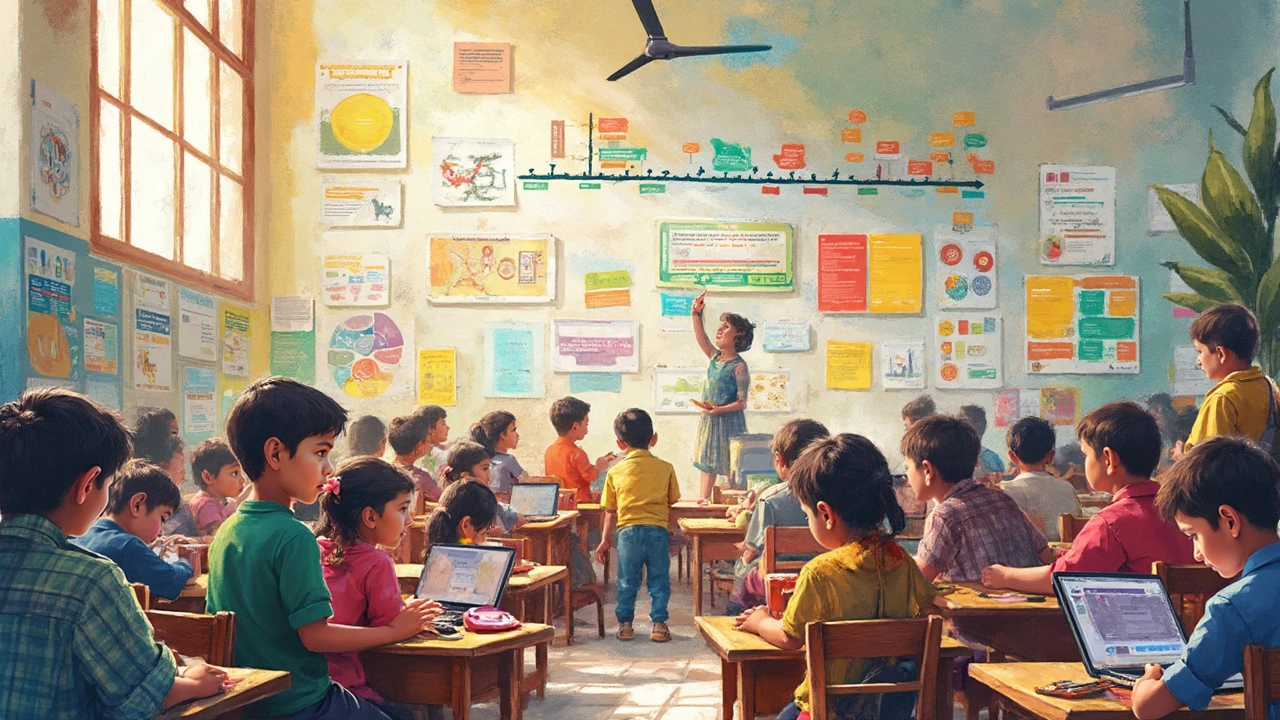Virtual Classrooms: How Online Learning Works in India Today
When you think of virtual classrooms, a digital space where teachers and students interact in real time using video, chat, and shared tools. Also known as online learning environments, they’re no longer just a backup plan—they’re the main way millions of students in India study every day. Whether you’re in a village with slow internet or a city with full bandwidth, virtual classrooms let you join a lesson from your phone, tablet, or laptop. No commute. No fixed schedule. Just learning that fits your life.
What makes a virtual classroom work isn’t just the video call. It’s the e-learning platforms, digital systems built to host lessons, track progress, and deliver assignments behind it. Think of them like the engine—without a good platform, even the best teacher can’t reach students properly. Platforms like Google Classroom, Zoom, and dedicated LMS tools handle everything from quizzes to attendance. And they’re not just for colleges. Schools across CBSE, ICSE, and state boards now use them daily. The key? Simple interfaces, clear navigation, and tools that keep students engaged instead of overwhelmed.
But here’s the real question: do virtual classrooms actually help students learn better? The answer isn’t yes or no—it’s about design. A good virtual classroom gives you structure without rigidity. It lets you pause, rewind, and review. It lets teachers spot who’s falling behind before it’s too late. It connects students to peers they’d never meet in a physical room. That’s why top-performing students today don’t just watch lectures—they join live discussions, submit work on time, and use feedback to improve. And the data backs this up: students who actively use digital tools in their learning see better retention, faster progress, and higher confidence.
It’s not about replacing teachers. It’s about giving them better tools. A virtual classroom lets a teacher in Delhi reach a student in Assam with the same clarity as if they were in the same room. It lets a student who struggles with loud classrooms learn at their own pace. It lets parents see what’s being taught without needing to be there physically. That’s the power of digital education—not the tech itself, but how it breaks down barriers.
And it’s not just for academics. Virtual classrooms are now used for skill-building, exam prep, and even career training. Whether you’re studying for JEE, learning to code, or prepping for NEET, the tools are the same. The difference? How you use them. The best learners treat their virtual classroom like a real one—showing up on time, asking questions, and staying consistent.
What you’ll find below are real stories and practical guides from students and educators who’ve made virtual classrooms work. From how to pick the right platform to how to stay focused without a physical classroom, these posts cut through the noise. No fluff. Just what works—right now, in India.

The Real Challenges of eLearning
Apr 8, 2025 / 0 Comments
eLearning has transformed education, making knowledge more accessible than ever. But it comes with its own set of challenges like the lack of personal interaction, technical issues, and the need for self-discipline. This article delves into these problems, exploring how they impact the learning experience. Readers will gain insights into how to overcome barriers and make the most of digital education.
READ MORERECENT POSTS
- How to Improve English Quickly at Home: Fast and Practical Tips
- eLearning vs Classroom Learning: What's the Real Difference?
- Which Learning Platform Pays the Most? Top Platforms for Earning While You Learn
- The Three Main Types of eLearning Explained: Synchronous, Asynchronous & Blended Learning
- Fastest Program to Become a Teacher: Which Training Route Gets You Teaching Quick?